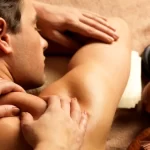Wichtige Punkte
- Nomads struggle with inconsistent routines, limited space, and lack of equipment
- Bodyweight training and Zone 2 cardio offer effective, no-equipment fitness that preserves strength and heart health
- Portable tools and apps support routine adherence even offline
- CE‑marked non‑invasive vagal neuromodulation system may help manage travel‑related stress and energy with 0 serious adverse events reported to date
A Provocative Opening
Ever wondered how to keep your body strong when your “gym” is a hostel bunk or a coworking café chair? For digital nomads, staying active on the go can feel like a constant negotiation between wanderlust and wellness.
Warum Mobilität wichtig ist
As nomads hop across time zones and unfamiliar cities, regular movement often falls by the wayside. Disrupted sleep, erratic meals, and long hours working from small spaces can slowly erode energy, strength, and focus. Studies show that the lack of consistent routine is one of the foremost health challenges this group reports—alongside loneliness and burnout [1][2][3].
Common Roadblocks & Rising Consequences
Nomads frequently encounter:
- Cramped quarters: hotel rooms or shared apartments with little room to move
- Equipment scarcity: gyms are inconsistent and luggage space is limited
- Erratic schedules: time zones and client work shift routines
- Motivation dips: absence of habit anchors leads to skipped workouts
The result often includes stiffness, low energy, disrupted sleep, and loss of muscle or endurance.
Science Behind Staying Strong on the Road
Bodyweight Training (Calisthenics)
Bodyweight or calisthenics exercises—push‑ups, squats, planks, lunges, burpees—engage multiple muscle groups and improve strength, coordination, and mobility without equipment. Harvard‑cited research found significant improvements in aerobic capacity (by ~33%), core endurance (~11%), and lower‑body power (~6%) from minimal training [4]. Health experts have highlighted eight such moves ideal for travelers, emphasizing heart‑health and muscle maintenance anywhere [5].
Zone 2 Cardio
Low‑intensity aerobic exercise at about 60–70% of maximum heart rate—such as brisk walking, light cycling, or easy jogging—builds mitochondrial density, metabolic flexibility, fat burning, and cardiovascular endurance without overtaxing the body [6]. Most recommendations suggest 20–30 minute sessions, two to four times per week, with room to extend as fitness improves [7].
How to Put It into Practice
No-Gear Workouts
Try a mini-session of push‑ups, squats, lunges, planks, glute bridges, mountain climbers, and supermans—recognized as high-impact bodyweight staples for travelers [5]. Or follow a tabata or 10‑9‑8 rep ladder for efficient strength and cardio in tight quarters [8].
Nomad-Friendly Tools
A light resistance band, foldable mat, or compact suspension strap adds scalable resistance without heavy weight. Fitness apps with offline video workouts and habit tracking can anchor consistency even when Wi‑Fi drops—tools increasingly popular among nomads [9][10].
Smart Cardio Integration
Take advantage of walking tours, sightseeing, or active recovery walks to stay in Zone 2—simple, flexible, and doable anywhere. Even sub‑15‑minute brisk walking sessions can improve mood, heart health, and energy levels [11].
A Potential Complement: CE‑marked Non‑invasive Vagal Neuromodulation System
While not essential, this scientifically characterized wearable device may support autonomic balance and energy during travel-related stress. To date, studies have reported 0 serious adverse events in scientific research. It may help enhance resilience when paired with the strategies above—but users should consult a qualified health professional before adding it to their regimen.
Example in Motion
Nomads I’ve spoken with—like a couple working from Bali, Lisbon, and Chiang Mai—report that structuring just 20–30 minutes of movement daily, tracked via habit apps, helped them retain strength, sleep better, and feel more grounded despite constant change.
Was Sie als Nächstes tun können
Begin with a 10‑minute bodyweight session today—maybe squats, planks, and lunges. Add a 20‑minute brisk walk later. Try a resistance band or offline workout app next trip. If stress or low energy lingers, ask a health professional whether vagal neuromodulation could complement your routine.
Der Artikel stellt in keiner Weise eine medizinische Beratung dar. Bitte konsultieren Sie einen zugelassenen Arzt, bevor Sie eine Behandlung beginnen. Diese Website kann Provisionen für die in diesem Artikel erwähnten Links oder Produkte erhalten.
Quellen
- Medium – Health and Fitness for Digital Nomads in Asia: Best Practices
- GQ – Why Zone 2 Cardio is Good for You
- Digital Nomad Site – How to Stay Fit as a Digital Nomad
- Harvard Health – Advantages of Body‑Weight Exercise
- Health.com – Bodyweight Exercises on the Go
- GQ – Zone 2 Cardio Benefits
- MyJuniper – Zone 2 Cardio Guidelines
- FittestTravel – Bodyweight Travel Workouts
- Journée Mondiale – Fitness Revolution for Digital Nomads
- Open Textbooks Clemson – Digital Fitness and Society
- Tom’s Guide – 3 Walking Workouts Under 15 Minutes
Last Updated on August 5, 2025



